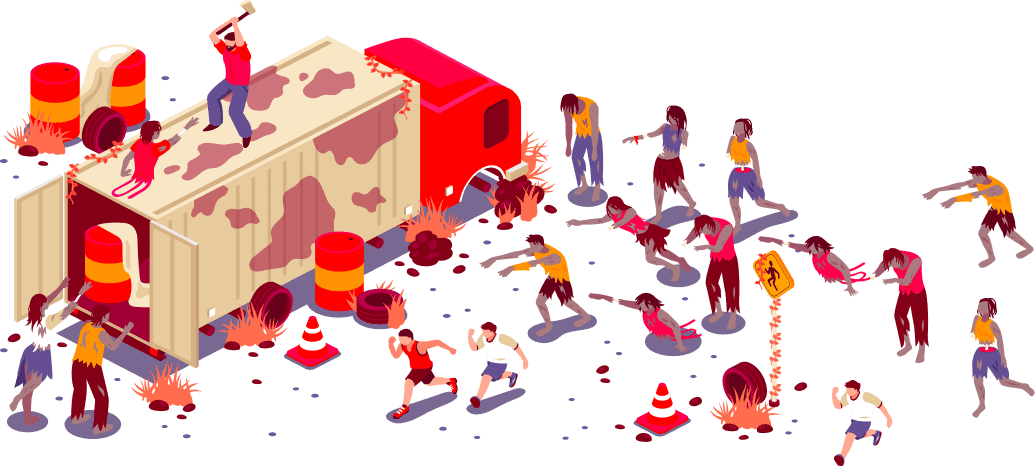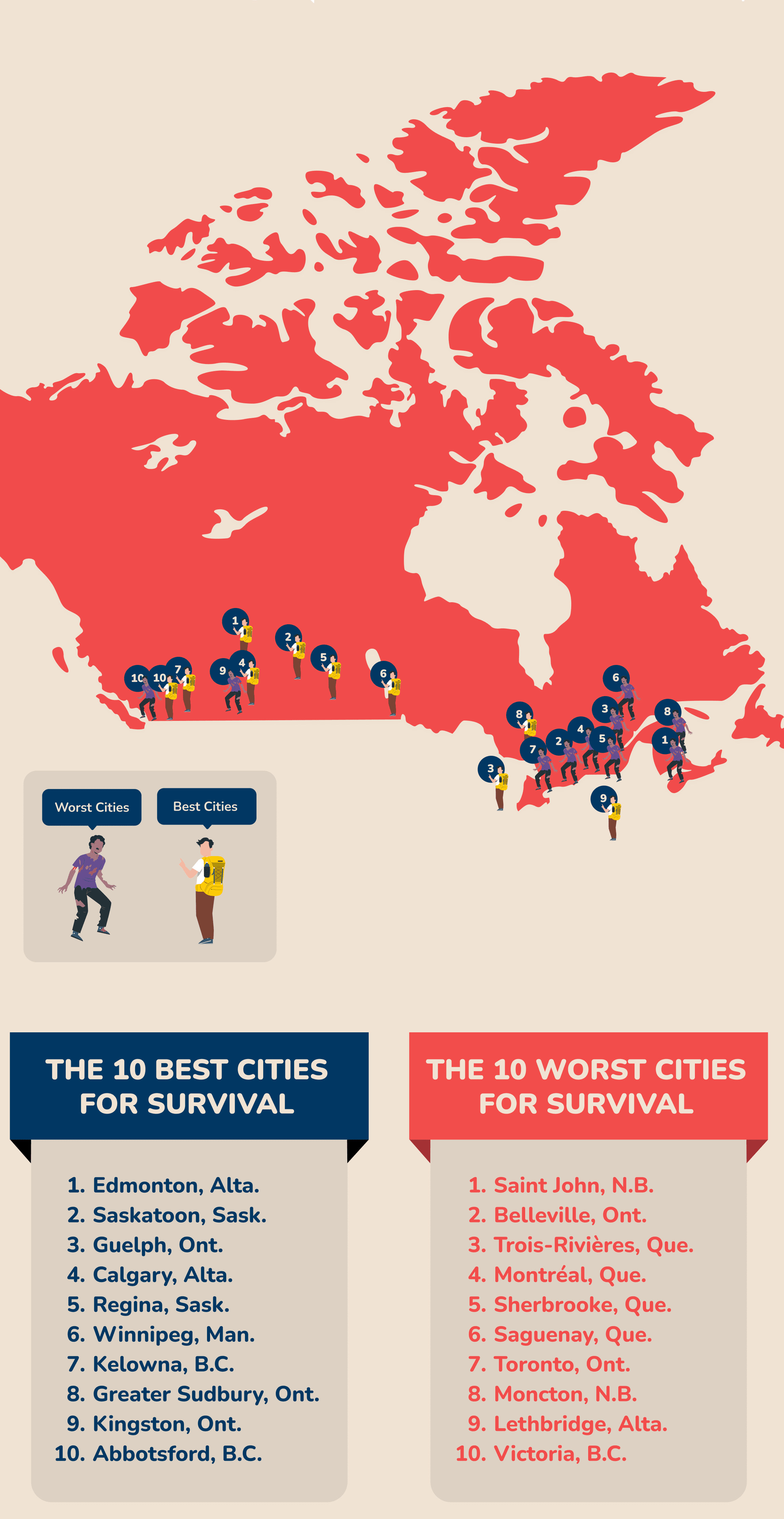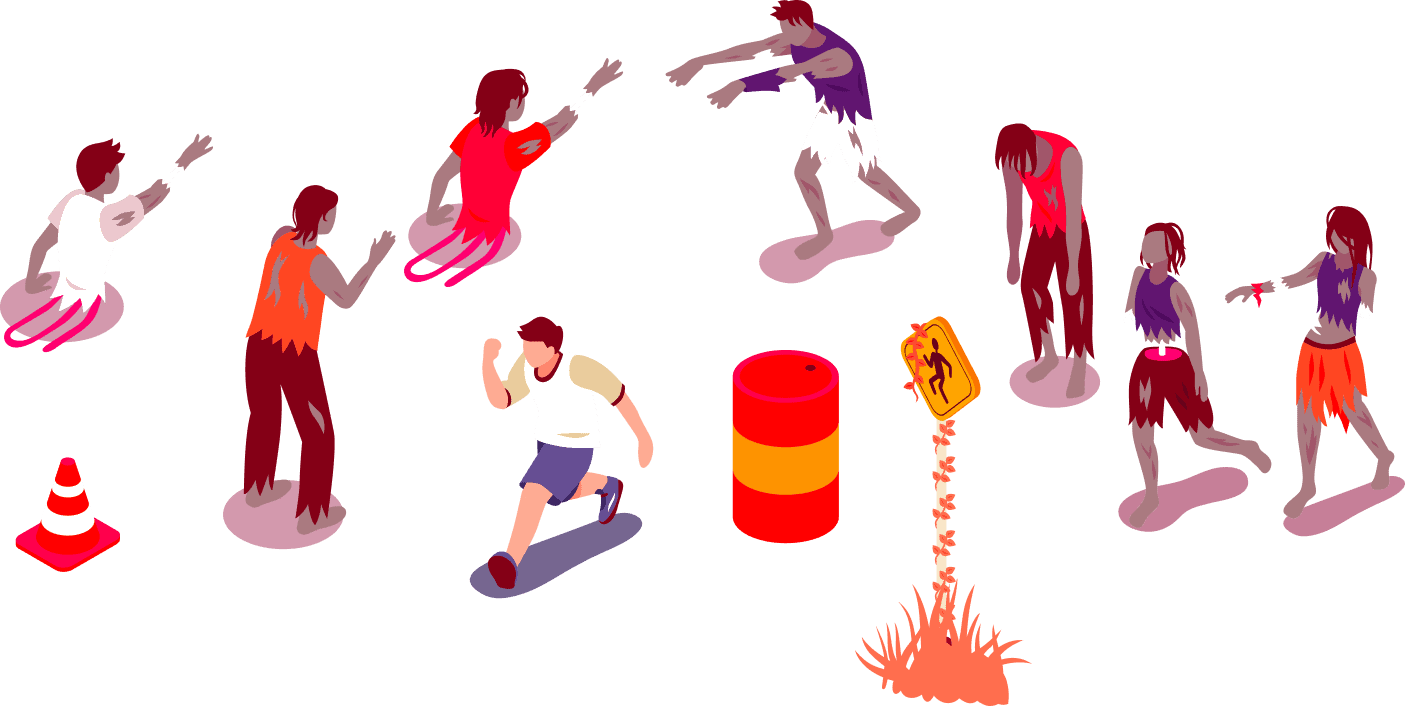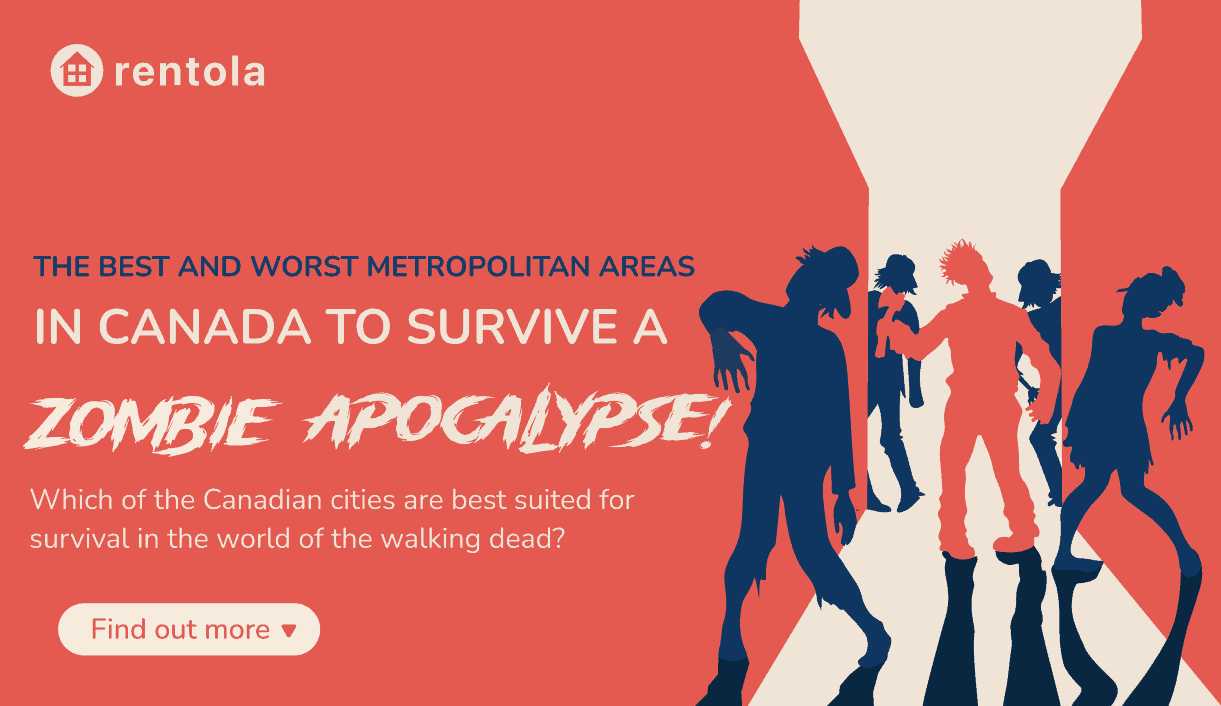Oshawa ranked 13th for Best Cities in Canada to survive a Zombie Apocalypse
Published March 16, 2023 at 1:51 pm

Who knew Oshawa had so many hideouts in case of a Zombie invasion?
Rental housing platform, Rentola.ca ranked 35 metropolitan areas in Canada based on the possibility of surviving a zombie apocalypse. The study concluded that you are most likely to survive in Edmonton and least likely to survive in Saint John, and that the Prairies are definitely the place to be, with Oshawa finishing just outside the top ten in 13th place.
The study was conducted using the most recent data available from Statistics Canada, with the cities ranked in five categories: vulnerability, hideouts, supplies, safety, and mobility.
Oshawa’s best score was a 5.79 in ‘hideouts,’ the seventh-highest score in the nation. For some reason, no data was available for ‘safety,’ so perhaps the city could have skewed higher in the study.
Hopefully we never get an opportunity to find out.
The prompt for the study was most definitely the COVID-19 pandemic, as well as wars and changes in the social and economic structures that continue to shape the cultural, social and economic landscape globally.
The situation, poses Rentola.ca, could potentially worsen. What if a new epidemic arises that turns people into zombies, or a war breaks out between the living and the dead? To determine the safest city in Canada in case of a hypothetical zombie apocalypse, they analysed various factors across the five categories to arrive at their conclusions.
If you do not reside in the safest city, it may be wise to consider relocation in the event of a global zombie outbreak.

VULNERABILITY
INDICATORS: POPULATION DENSITY, PERCEIVED PHYSICAL & MENTAL HEALTH, NUMBER OF VISITS TO THE AREA
Certain places are simply created for epidemics and their rapid spread. Think back to the past few years. The huge population density, the influx of tourists, the percentage of chronic diseases among the population and even the disaster risk index, yes, all were used to calculate which city is most vulnerable in the face of the wave of the dead.
HIDEOUTS
INDICATORS: AVERAGE HOUSEHOLD SIZE, HAD A PARK OR GREEN SPACE CLOSE TO HOME, HOUSING VACANCY RATE
Apocalypse isn’t just about astronauts flying on a heroic mission to destroy an asteroid heading toward Earth, it’s often a game of hide and seek. Therefore, it is important to find the best, most protected, or remote place to save your life and grow potatoes. This index shows how many hiding places there are in the region.
SUPPLIES
INDICATORS: HAD A BARREL OR CISTERN, HAD A GARDEN OR AREA WITH TREES, SHRUBS, FLOWERS OR VEGETABLES
Yes, you’ll need a lot of things: food, fuel, tools, weapons, clothing, medicine, and maybe even pet fish. So it is better to have all these shops nearby so that you can borrow goods from them as soon as possible. (But you will have to give it back later!)
MOBILITY
INDICATORS: WALKING, JOGGING, RUNNING, ROLLERBLADING, CROSS-COUNTRY RUNNING, HIKING, BICYCLING. BUILT UP AREAS: ROADS, NATURAL AND SEMI-NATURAL WATER, MOVABLE DWELLINGS
It may also be that you will have to travel a lot in search of survivors, provisions, or a better fate. Therefore, it is important that transport is your friend, and mobility is your best ally.
SAFETY
INDICATORS: CRIME RATE PER 100000 POPULATION, TOTAL FIREARMS, USE OF DISCHARGE, POINTING, TOTAL WEAPONS VIOLATIONS
Speaking of weapons and self-defence tools, the study looked at who has the most weapons, specialized stores, and military bases. So now we know who is most likely to have a zombie roast.

What makes Edmonton well poised to fight off a wave of zombies or avoid them appearing all together? The scenic city achieved relatively high scores in all categories, achieving the lowest score within the supplies category with a 6.44, which ranks the city at no.14. The lowest ranking that Edmonton achieved was 19th in terms of vulnerability.
But fear not, there are plenty of places, buildings and natural areas to build a base or hide from potential danger, as well as options to flee or relocate as the city ranked 1st in both hideouts and mobility.
If chaos breaks out, rest assured that you and your allies will stay safe: Edmonton ranked 7th in terms of safety.
Interestingly enough, only two other cities in the top 10 achieved the highest score in a single category with Guelph ranking 1st in terms of supplies and Saskatoon ranking 1st in terms of safety.
Another message from the study? Stay away from Central Canada. Notwithstanding Oshawa’s impressive score (under the circumstances) of 13th, the eight lowest rankings are all located in or bordering the Central Canadian region.
Among them are Saint John, N.B. at dead last (No. 35). The city achieved the lowest overall score in two different categories with hideouts being one of them and safety the other. Even though the city of Guelph (ranking 3rd overall) is somewhat close to all of the lowest ranking cities, there seems to be a significant difference in where you want to be in the event of a zombie outbreak. Surprisingly enough, only two other cities achieved the lowest ranking in one of the categories, which was Saguenay in terms of supplies and Toronto in terms of vulnerability. But even though Saguenay ranks as the 6th worst city overall, it actually did achieve the highest rank in terms of vulnerability.
We’ve learnt from zombie movies and TV shows that you’ve got to keep moving, making the prairies among the safest areas when the Zombies come after you. If you’ve depleted all of your resources in one location, you’ll need to relocate to replenish them. If the competition is high, it’s likely that you will die of starvation much sooner.
Many of the safest cities are located in the Prairie Provinces with five of them located here and a couple more nearby. Besides Edmonton you’ll find Saskatoon (No.2), Calgary (No.4), Regina (No.5) and Winnipeg (No.6) all in the same region. The majority of the areas had very high mobility scores, with six of them ranking in the top ten.
Oddly enough, the findings show that cities that rank low in supplies also rank low in safety, but conversely rank higher in vulnerability. This is initially surprising, as vulnerability contains data regarding population density, health and immigration, which could indicate the opposite, as these would supposedly be bigger cities with a lot of inhabitants. The safety scores include crime and weapons data, where a low score would maybe indicate more crime (but less weapons to protect yourself), which one might think that there would be a lot of in bigger cities.
To summarize the point: less crowded cities with low population density and high health scores = surprisingly high crime rates and few weapons.
All data has been collected and processed from Statistics Canada and min-max normalisation has been used to index the data sources in question, so the higher the score, the safer you are from the Zombie Apocalypse.
And it’s coming. Carry a big stick. Move to Edmonton.
With files from Benjamin Vajic and Roman Ahieviev







